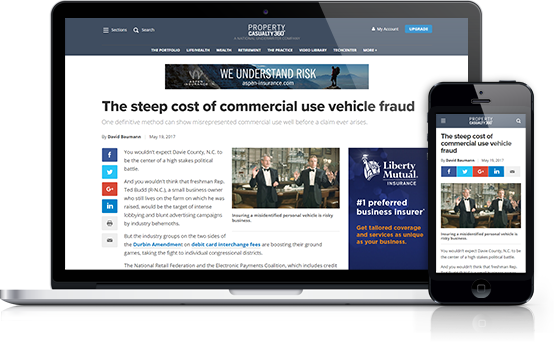U.S. Cities with the fastest commutes in 2024
Commuters in the U.S. in 2024 spend between 16 and 29 minutes behind the wheel.
Already have an account? Sign In Now
NOT FOR REPRINT
© 2025 ALM Global, LLC, All Rights Reserved. Request academic re-use from www.copyright.com. All other uses, submit a request to [email protected]. For more information visit Asset & Logo Licensing.
Commuters in the U.S. in 2024 spend between 16 and 29 minutes behind the wheel.
Tim Fagan of 1-800 WATER DAMAGE discusses strategies to streamline the claims restoration process and addresses the differences between commercial and residential claims.
Earnings per share rose for the fourth straight quarter.
White Paper
Sponsored by Vortex Weather Insurance
Parametric Hurricane Insurance: A Strategic Solution for Agents and Brokers
Hurricane-related financial risks can leave businesses vulnerable due to gaps found in traditional insurance policies. Parametric hurricane insurance provides a proactive solution for your clients to recover from hurricane-related financial losses quickly. Learn how this innovative coverage model offers transparent payouts based on measurable storm conditions--helping your clients bridge critical financial gaps when they need it most.
White Paper
Sponsored by Vortex Weather Insurance
Hourly Rain Insurance: A Strategic Solution for Agents and Brokers
Rain-related business disruptions can be costly for your clients. Parametric hourly rain insurance offers a proactive approach to mitigate financial losses from weather conditions. This data-driven solution delivers fast, automated payouts when rainfall thresholds are met, ensuring your clients are protected when they need it most.
 Copyright © 2025 ALM Global, LLC. All Rights Reserved.
Copyright © 2025 ALM Global, LLC. All Rights Reserved.


